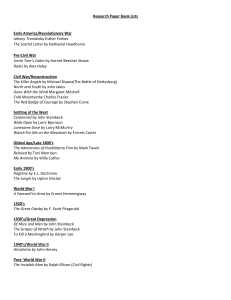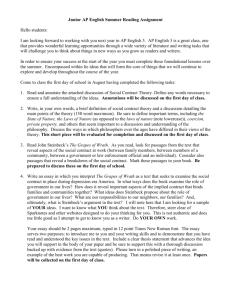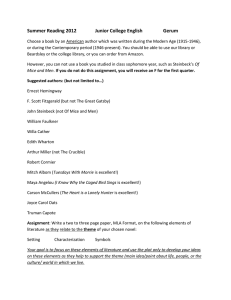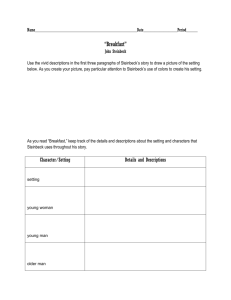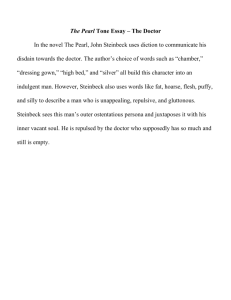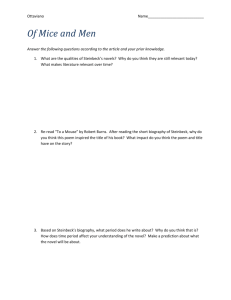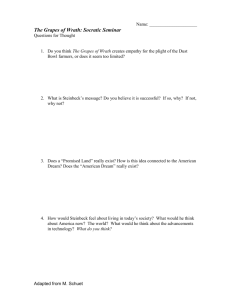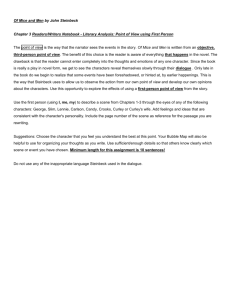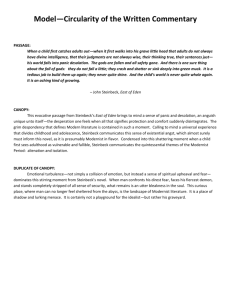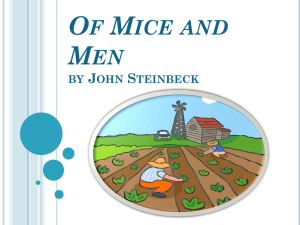Shake, Rattle and Roll - The Steinbeck Institute
advertisement
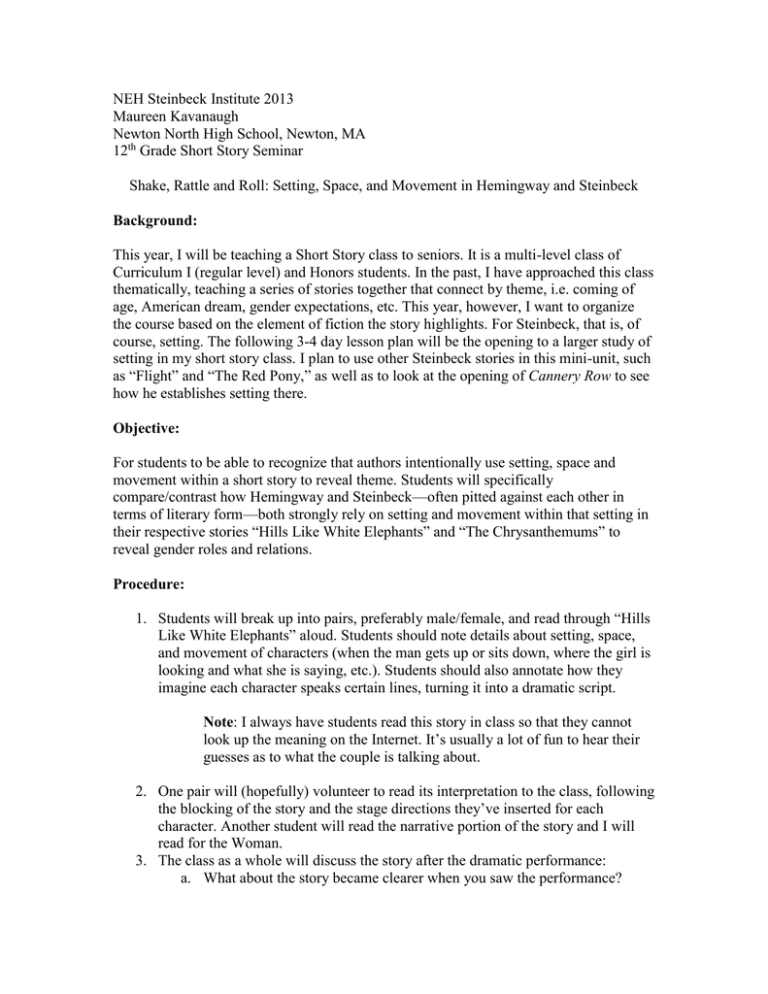
NEH Steinbeck Institute 2013 Maureen Kavanaugh Newton North High School, Newton, MA 12th Grade Short Story Seminar Shake, Rattle and Roll: Setting, Space, and Movement in Hemingway and Steinbeck Background: This year, I will be teaching a Short Story class to seniors. It is a multi-level class of Curriculum I (regular level) and Honors students. In the past, I have approached this class thematically, teaching a series of stories together that connect by theme, i.e. coming of age, American dream, gender expectations, etc. This year, however, I want to organize the course based on the element of fiction the story highlights. For Steinbeck, that is, of course, setting. The following 3-4 day lesson plan will be the opening to a larger study of setting in my short story class. I plan to use other Steinbeck stories in this mini-unit, such as “Flight” and “The Red Pony,” as well as to look at the opening of Cannery Row to see how he establishes setting there. Objective: For students to be able to recognize that authors intentionally use setting, space and movement within a short story to reveal theme. Students will specifically compare/contrast how Hemingway and Steinbeck—often pitted against each other in terms of literary form—both strongly rely on setting and movement within that setting in their respective stories “Hills Like White Elephants” and “The Chrysanthemums” to reveal gender roles and relations. Procedure: 1. Students will break up into pairs, preferably male/female, and read through “Hills Like White Elephants” aloud. Students should note details about setting, space, and movement of characters (when the man gets up or sits down, where the girl is looking and what she is saying, etc.). Students should also annotate how they imagine each character speaks certain lines, turning it into a dramatic script. Note: I always have students read this story in class so that they cannot look up the meaning on the Internet. It’s usually a lot of fun to hear their guesses as to what the couple is talking about. 2. One pair will (hopefully) volunteer to read its interpretation to the class, following the blocking of the story and the stage directions they’ve inserted for each character. Another student will read the narrative portion of the story and I will read for the Woman. 3. The class as a whole will discuss the story after the dramatic performance: a. What about the story became clearer when you saw the performance? b. What do you notice about the passage of time? c. What are they talking about? What details from the story lead you to this conclusion? d. What is the nature of their relationship? With whom do you sympathize? e. Why does the girl repeat the word “please” seven times? Out of what emotion does that come? Anger? Fear? Hysteria? What leads you to believe that? f. Discuss setting. How does it relate to their conversation about the operation? i. The landscape ii. The railroad station g. What predictions do you have for this couple and their relationship? 4. Using specific details of the setting, students will write a 1-2 page response in which they decide what decision the girl will make. 5. Students will come to class the next day having read Steinbeck’s “The Chrysanthemums” and annotated for physical setting, space and movement of characters within the story. 6. As a class, we will chart (see below) the details they noticed about the movements of Elisa, Henry, and the tinker within the setting and spaces of the story. Space Who is there? How What interactions with other does he/she behave in characters happen there? Note that space? physical movement. What do these interactions reveal about character? Theme? Eliza’s garden The tinker’s wagon The ranch/the orchard The road 7. After discussing the two stories separately, we will return to the opening paragraphs of the two short stories and look at them side by side. Now that we know the story and the characters, what clues did Hemingway and Steinbeck give us from the opening descriptions that hinted at their story’s theme? 8. Creative writing extension: Students will receive a slip of paper that contains a generic theme (i.e. loss of innocence, death, rebirth, freedom, friendship, coming of age, etc.). They will then construct the opening description (1-2 paragraphs) of a setting (natural or otherwise) that could hint at this theme. On the day the assignment is due, the class will look at descriptions anonymously under the document camera and try to figure out which theme the writer was trying to reveal through setting and what details helped reveal that theme. I will likely the class with a list of possible themes to choose from to help them make that guess. Resources Steinbeck, John. The Long Valley. Penguin Books: New York, New York, 1995. Copies of “Hills Like White Elephants” by Ernest Hemingway.
